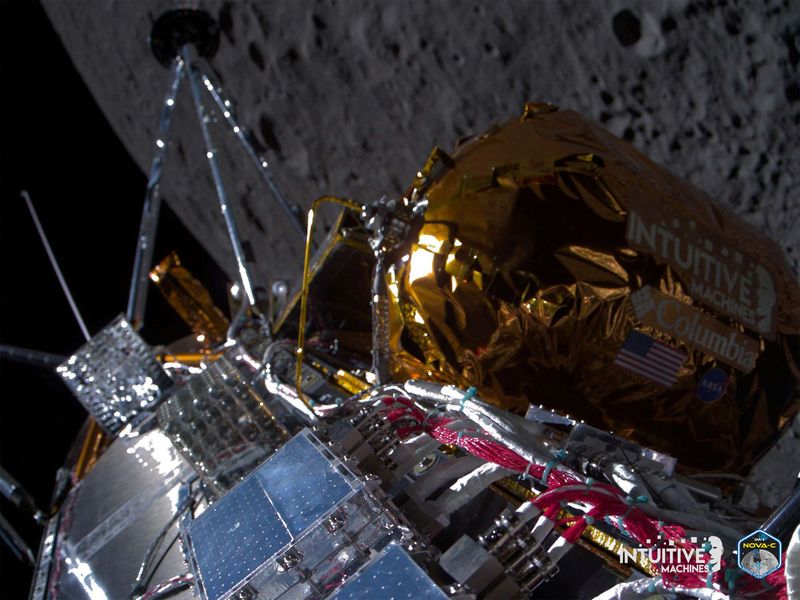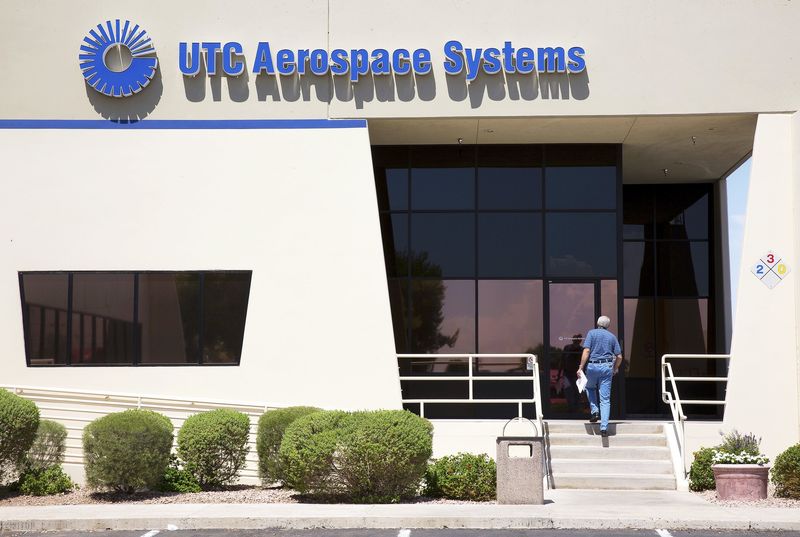Lunar module Odysseus tilted sideways on lunar surface but ‘alive and healthy’ – Reuters


© Reuters. Intuitive Machines’ Odysseus spacecraft passes by the near side of the Moon after lunar orbital insertion on February 21, 2024, in this handout image released on February 22, 2024. Intuitive Machines/Handout (REUTERS/File Photo)
Steve Gorman and Joey Roulette
(Reuters) – A lunar module called Odysseus is “alive and well” but resting on its side a day after its white-knuckle landing, the first private spacecraft to reach the lunar surface and the first from the United States since 1972. the company behind the vehicle said Friday.
Houston-based Intuitive Machines also said human error caused the spacecraft’s laser-based range finder to fail, with engineers accidentally detecting the defect hours before landing time and making emergency fixes on the fly to save the mission from a possible crash. The method has been revealed. .
The Odysseus surfaced intact on Thursday, but an analysis of data by flight engineers showed the six-legged aircraft tripped over its own feet near the end of its final descent, company officials said at a briefing the next day.
The spacecraft is believed to have caught one of its landing feet on the bumpy lunar surface, tumbled and came to rest on its side, resting on a rock at one end, said Steven Artemus, CEO of the company that built and flew the lander.
Nonetheless, all indications are that Odysseus is “stable at or near our planned landing site” near a crater called Malapert A in the moon’s south polar region. Altemus told reporters.
“We are in communication with the lander and our mission control operators are sending commands to the vehicle,” Altemus said, adding that they are working to obtain the first photographic images of the lunar surface from the landing site.
A brief mission status report posted on the company’s website early Friday described Odysseus as “alive and well.”
The company said radio signals shortly after landing Thursday showed the Odysseus, a 13-foot-tall hexagonal cylinder, landed in an upright position, but Altemus said that incorrect conclusion was made based on telemetry before landing.
Disadvantages of Sideways
Although the lander’s lateral position is far from ideal, company officials said all but one of the six NASA science and technology payloads can be mounted on exposed parts of the vehicle and receive communications. “This is great for us,” Altemus said. .
“We believe we can also meet all the requirements of commercial payloads,” he added.
However, two of the spacecraft’s antennas are pointed toward the surface, which will limit communication with the lander, Altemus said.
Additionally, the function of the solar energy panels atop Odysseus, which is currently facing the wrong direction, is unclear, but a second array on the side of the spacecraft appears to be functioning properly and the spacecraft’s batteries were fully charged. said.
The unmanned robotic spacecraft reached the lunar surface on Thursday after a difficult final approach and descent that surfaced problems with its navigation system, forcing flight controllers on the ground to use untested workarounds to avoid what could have been a disaster. crash landing.
Engineers at NASA’s Kennedy Space Center in Florida accidentally failed to unlock a safety switch before the lander was launched into space last Thursday, rendering the original laser-powered range finder inoperable, Altemus said.
“It was a mistake on our part,” he said, comparing the overlooked switch to the safety mechanism of a firearm.
The matter was discovered by chance in lunar orbit a week later. With only a few hours left before landing, flight controllers were solving another problem.
Otherwise, they would have realized that the safety lock was still on when they were supposed to power on the range finder during the last five minutes of the descent, said mission leader Tim Crain.
Tensions arose when engineers determined that existing software on board the spacecraft could not override safety locks to activate the range finder, company officials said.
Ultimately, engineers worked to write software that would direct the lander to rely on the experimental NASA Lidar payload it carried. This is a remote sensing system that uses fast pulses and reflections of light, such as lasers, to determine the distance between objects.
NASA’s Lidar, designed to be used only as a technology demonstration and backup, has been used under extreme pressure, but it has met its challenges.
“It’s a very big risk,” said Abhi Tripathi, a former SpaceX mission leader. “The mission leader must make sure everyone does their job perfectly, like a leader.”
Crane said the spacecraft, burning propulsion fuels of liquid methane and liquid oxygen for the first time in space, “worked flawlessly” during its seven-day flight to and from lunar orbit.
Odysseus’ condition was grim right after landing. It took some time to re-establish communication with the spacecraft after the expected radio outage and determine its fate some 384,000 kilometers from Earth.
When contact was finally reestablished, a faint signal confirmed that the lander had touched down, but mission control immediately became uncertain about the exact status and location of the vehicle, company officials said in a webcast of the event Thursday evening.
Crane said he believes the payload aboard the lander will be able to operate for about nine to 10 days, after which the sun will set on the polar landing site.
Shares of Intuitive Machines fell 30% in extended trading Friday, paring all gains in Friday’s market session after the company announced its lunar module had tumbled.



